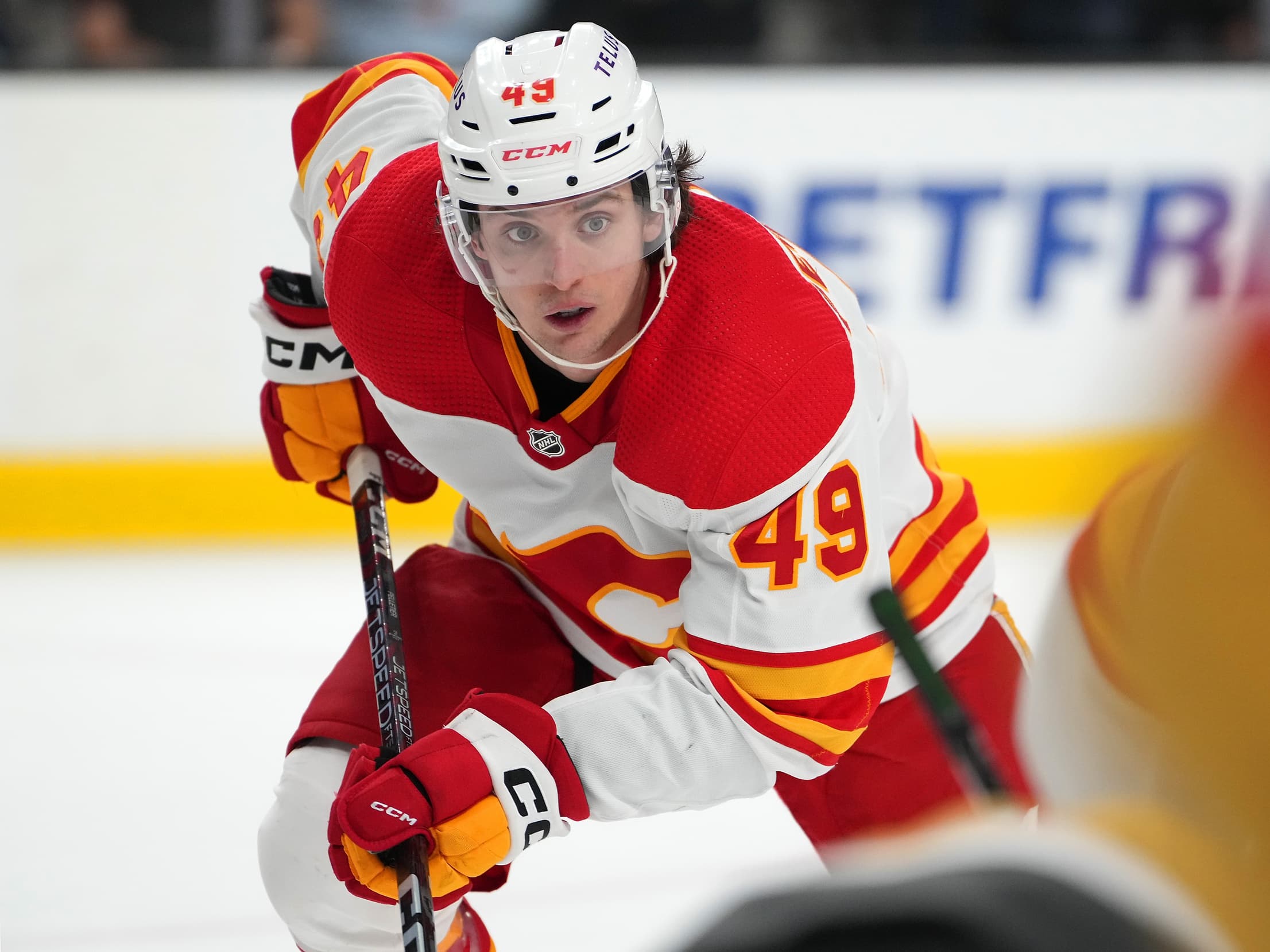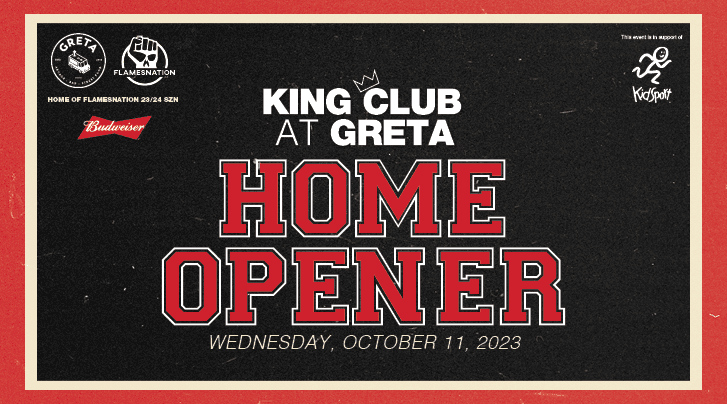Nation Sites
The Nation Network
FlamesNation has no direct affiliation to the Calgary Flames, Calgary Sports and Entertainment, NHL, or NHLPA
What you need to know about the Calgary Flames and long-term injury cap relief

Photo credit: Stephen R. Sylvanie-USA TODAY Sports
It hasn’t been a great training camp for the Calgary Flames when it comes to the availability of some key pieces. First, the news broke that Oliver Kylington wouldn’t be with the club to start camp due to undisclosed personal reasons. Then Jakob Pelletier was injured in the second pre-season game with Seattle. And on Sunday, Kevin Rooney suffered an injury in practice that head coach Ryan Huska classified as “not short-term.”
With three players representing a fairly significant chunk of cap space likely unavailable to begin the regular season, let’s discuss the ins and outs of the long-term injury relief system.
(Before we get going, I’m very much indebted to the great people at CapFriendly and PuckPedia. Thanks to them, I feel like I understand 75% of the complex world of LTIR.)
The CBA definition
The long-term injury reserve (LTIR) and its cap relief mechanisms are defined in Article 50 of the CBA (“Team Payroll Range System”), which is devoted to the salary cap and its various mechanisms and quirks.
Article 50.10, subsection D, defines LTIR:
(d) Bona-Fide Long-Term Injury/Illness Exception to the Upper Limit. In the event that a Player on a Club becomes unfit to play (i.e., is injured, ill or disabled and unable to perform his duties as a hockey Player) such that the Club’s physician believes, in his or her opinion, that the Player, owing to either an injury or an illness, will be unfit to play for at least (i) twenty-four (24) calendar days and (ii) ten (10) NHL Regular Season games, and such Club desires to replace such Player, the Club may add an additional Player or Players to its Active Roster, and the replacement Player Salary and Bonuses of such additional Player(s) may increase the Club’s Averaged Club Salary to an amount up to and exceeding the Upper Limit, solely as, and to the extent and for the duration, set forth below. If, however, the League wishes to challenge the determination of a Club physician that a Player is unfit to play for purposes of the Bona-Fide Long-Term Injury/Illness Exception, the League and the NHLPA shall promptly confer and jointly select a neutral physician, who shall review the Club physician’s determination regarding the Player’s fitness to play.
To emphasize and reiterate: if a player will be unfit to play for at least 24 calendar days and 10 regular season games, they (and their cap hit) can be replaced by a player or players making up to the same amount. For the 2023-24 regular season, this means that any player the Flames want to place on LTIR would need to be unavailable until at least Nov. 2, at which point 24 days and 10 games will have elapsed.
Our analysis was right until Rooney’s injury
Kids, when you’re in the glamorous and high-stakes world of writing on the internet about grown men playing a game, you have to learn to roll with the punches. On Tuesday, we posted an in-depth – painfully so – analysis of the Flames’ injury and salary cap situation, concluding that they had enough cap space to avoid beginning the season on LTIR. The article went live at 8 a.m. MT. Just over two hours later, following an optional morning skate, Flames head coach Ryan Huska disclosed Rooney’s injury (in response to a query from Postmedia’s Wes Gilbertson).
So let’s revisit our math now that things have substantially changed.
To avoid using LTIR to start the season, the Flames would need to be able to file a roster with a cap hit of $83.5 million (or less) featuring 20 healthy, active players and also covering the cap hits of their three unavailable players (Kylington, Pelletier and Rooney).
Left Wing | Centre | Right Wing |
Jonathan Huberdeau $10.5 million | Elias Lindholm $4.85 million | Andrew Mangiapane $5.8 million |
Adam Ruzicka $762,500 | Nazem Kadri $7 million | Dillon Dube $2.3 million |
Yegor Sharangovich $3.1 million | Mikael Backlund $5.35 million | Walker Duehr $825,000 |
Blake Coleman $4.9 million | Dryden Hunt $775,000 | n/a n/a |
Left Defence | Right Defence | Goaltenders |
MacKenzie Weegar $6.25 million | Rasmus Andersson $4.55 million | Jacob Markstrom $6 million |
Noah Hanifin $4.95 million | Chris Tanev $4.5 million | Dan Vladar $2.2 million |
Jordan Oesterle $925,000 | Nikita Zadorov $3.75 million | Dennis Gilbert $762,500 |
This is the least expensive combination of 20 players that doesn’t involve the Flames trying to waive players on one-way deals in an effort to sneak them through waivers. (This involves the Flames putting Matt Coronato, who’s waiver exempt, in the AHL, and using 11 forwards and seven defenders.) These 20 players represent $80.5 million in combined cap hits. Not bad!
In terms of the three unavailable players:
- Because he’s on a one-way deal, Kylington’s full $2.5 million cap hit counts while he’s on the injured/non-roster list.
- Because he’s on a two-way deal (and was injured during camp and qualifies for the season-opening injury reserve), Pelletier’s $863,333 cap hit is pro-rated to $406,000 based on how long he was on the NHL roster last season.
- Because he’s on a one-way deal, Rooney’s full $1.3 million cap hit counts while he’s on the injured/non-roster list.
- These players can’t be reduced, moved, buried or otherwise disappeared. These cap hits must be carried until these players are determined to be fit to play again.
So those three players on the injured/non-roster list combine for $4.206 million of cap hits. And these three fellas bump the Flames’ cheapest possible 20-man opening roster to $84.256 million, about $756,000 north of the cap ceiling.
So… they need to start the season on LTIR in order to field an actual legal lineup of 20 players. So how might that work?
Starting the season on LTIR
The CBA definition of LTIR helpfully walks through a few scenarios, but three of their four scenarios describe in-season moves. But Illustration #4 lays out what Calgary’s situation looks like:
Illustration #4: The Upper Limit in a League Year is $70.0 million. A Player who has an SPC with an Averaged Amount of $2.0 million becomes unfit to play on the last day of Training Camp, and on the same day, his Club exercises the Bona-Fide Long-Term Injury/Illness Exception on such Player. On Opening Day, the Club has an Averaged Club Salary of $71.5 million (excluding Earnable Performance Bonuses up to the full amount of the Performance Bonus Cushion). The Club is deemed to have already fully replaced the unfit-to-play Player with any Player or Players on the Opening Day Roster. If these replacements are maintained through the conclusion of the season, the Club’s Averaged Club Salary is $71.5 million, as the Club is permitted to exceed the Upper Limit by $1.5 million because of the Bona-Fide Long-Term Injury/Illness Exception.
PuckPedia has this really helpful description which seems to fit the Flames’ situation:
If a team cannot be cap compliant on opening day without using LTIR, the LTIR Pool is the amount the team exceeds the Cap. For example, if a team is $3M over the Cap and places a player on LTIR with a $4M Cap Hit for the opening roster submission, the LTIR Pool is the $3M that the team exceeded the cap.
Basically, the Flames cannot exceed the cap by more than the cap hits of the players they place on LTIR. But their LTIR Pool, the money they have to work with, is set by the amount they exceed the cap on Day 0. So the Flames could feasibly place all three of Kylington, Pelletier and Rooney ($4.206 million combined cap hit) on LTIR for its opening roster submission and file a 23-man roster that exceeds the cap by up to $4.206 million. But here’s the rub: the amount that they exceed the cap by on their opening submission would be the maximum amount they can exceed the cap by until players start coming off LTIR.
So if we’re interpreting the NHL’s vague and wacky LTIR rules correctly – and we’re 75-80% sure we are – the Flames would be incentivized to file the most expensive 23-man roster that they can, and then shuffle people around to field the most competitive roster they can after the initial roster filing.
It could get weird.
We’ll have more on the wild and wacky world of the Flames’ initial roster filing in the coming days.
Breaking News
- FlamesNation Mailbag: Waiting for Santa with reader questions
- Flames injury news: positive signs for Martin Pospisil
- Recap: Martin Frk leads Wranglers to memorable Winter Wranglerfest win in more ways than one
- Scotia Place: a street-level look at December construction progress
- Beyond the Boxscore: Flames come out swinging in big 6-3 win over Golden Knights

